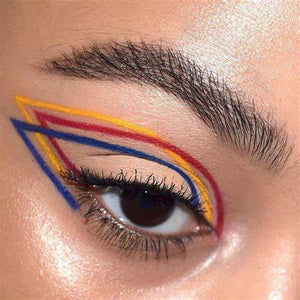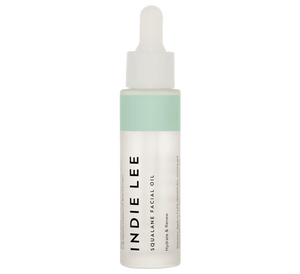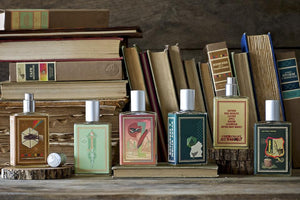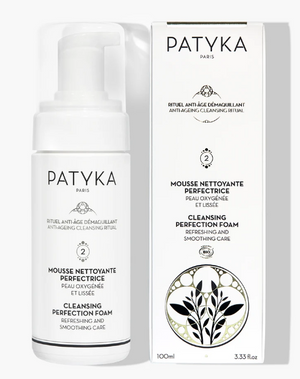Clarifying exfoliation
A major step that many men and woman are missing in their skin care regimens is exfoliation.Removing excess skin cells is essential to brighter skin and it makes every other product you use work better. But what with so many exfoliants on the market, how do you know what’s right for your skin? So consider this your exfoliation cheat sheet (aka How to tell your AHA from a hole in the ground).
To start off, there are 2 classes of exfoliants: Mechanical and Chemical. Mechanical is when there are scrubby particles (usually synthetic beads or ground nuts/pits in a liquid or gel base that, when rubbed on, physically break the bond between the old skin cells that need to go and the rest of your skin. Chemical exfoliants are compounds that dissolve the “glue” that holds the old skin cells on so that they can slough off on their own.
Some options available at The Gilded Girl:
Simple Sugars Facial Scrubs – finely milled sugar, mixed with a carrier oil, as well as delicious smelling essential oils and extracts make this a wonderful choice for dry skin.
Skin & Tonic London Gentle Scrub – Mix this dry scrub with water or oil to make a paste that will leave your skin feeling extra smooth.
A great, extremely gentle one that I carry for the face is Andrea Garland’s Pink Palma Rosa Purifying Facial Scrub.
Moving on to chemical exfoliations, which tend to be confusing for many people.
The first, and most common, class of chemical exfoliants is known as Alpha Hydroxy Acids (or AHAs). The acids that fall into this class and some info about them are:
Glycolic Acid: Comes from sugar cane. Good for most skin types, except for really sensitive skin. It’s the most common AHA on the market.
Malic Acid: Comes from apples. Not often used alone. Rather, it usually is in an AHA blend of 3 or more acids.
Lactic Acid: Comes from milk. It is easily my favorite. It does all of the bond breaking goodness of the other AHAs but has the added benefit of being moisturizing. It’s great on sensitive skin.
Citric Acid: Comes from citrus fruits. Can be very irritating if not in low concentrations or in a blend with other acids.
Tartaric Acid: You will generally not see this unless it comes in a blend.
Beta Hydroxy Acid is another common exfoliant. The only BHA – salicylic acid.
But when to use what??? AHAs are water-soluble. That means, they don’t really absorb into the skin (since one of the skin’s function is to keep water out), rather they do their work on a surface level. Salicylic Acid is lipid (oil) soluble. This means that it can get into the pore and clean out the sebum (oil) and dead skin cells inside.
If you have mostly clear skin, but are concerned with fine lines and sun damage, use the AHAs. If you have oily/acne-prone skin, then the BHA is the one for you.
Please note that in order to work best, these acids need to be in the correct concentration of 5-8 % and at a pH of 3-4. This usually is not stated on the bottle. If the AHA is listed as the 2nd or 3rd ingredient, it’s usually in the proper concentration.
Vitamin A derivatives, such as retinols and retinoids, also fall into the chemical exfoliant category. These derivatives are widely regarded as the gold standard for anti-aging, scientifically proven to reduce fine lines and wrinkles, as well has hyperpigmentation. These potent ingredients must not be used by women who are pregnant, actively trying to become pregnant, or nursing due to the fact that they can penetrate into the bloodstream.
Some great choices are:
Glo Therapeutics Renew Serum combines the Retinol, Glycolic Acid, and Salicylic Acid, for a 1-2-3 punch.
Rodial Super Acids Daily Azelaic Acid Serum – Azelaic Acid is wonderful for brightening the skin and removing sun damage. In this formulation, it is mixed with Lactic Acid for a fabulous exfoliation, This is great for dry, damaged skin.
Finally, there is a 4th type of chemical exfoliant – the enzyme. Enzymes work to dissolve the top layer of dead cells (as opposed to AHAs which just eat up the bond that holds them on). Not all enzymes do the trick. They must be in a class known as Proteolytic Plant Enzymes. The ones normally used in skin care are Papaya (papain), Pineapple (Bromelain) and Pumpkin (cucurbita pepo). Enzymes are great for sensitive skin. IMPORTANT: Enzymes are what women and men of color should be using for exfoliation. Mechanical exfoliation can damage the skin causing dark spots. Acids can cause discoloration (lightening of pigment). Enzymes are safe and very gentle.
Glo Therapeutics Pumpkin Enzyme Scrub smells heavenly and leaves your skin feeling divine!
If you’d like a consultation to determine what exfoliation method is right for your skin, don’t hestitate to stop in and see our licensed esthetician and owner, Liz Quesnelle, or email her at liz@thegildedgirl.com
- Elizabeth Quesnelle






Comments 0